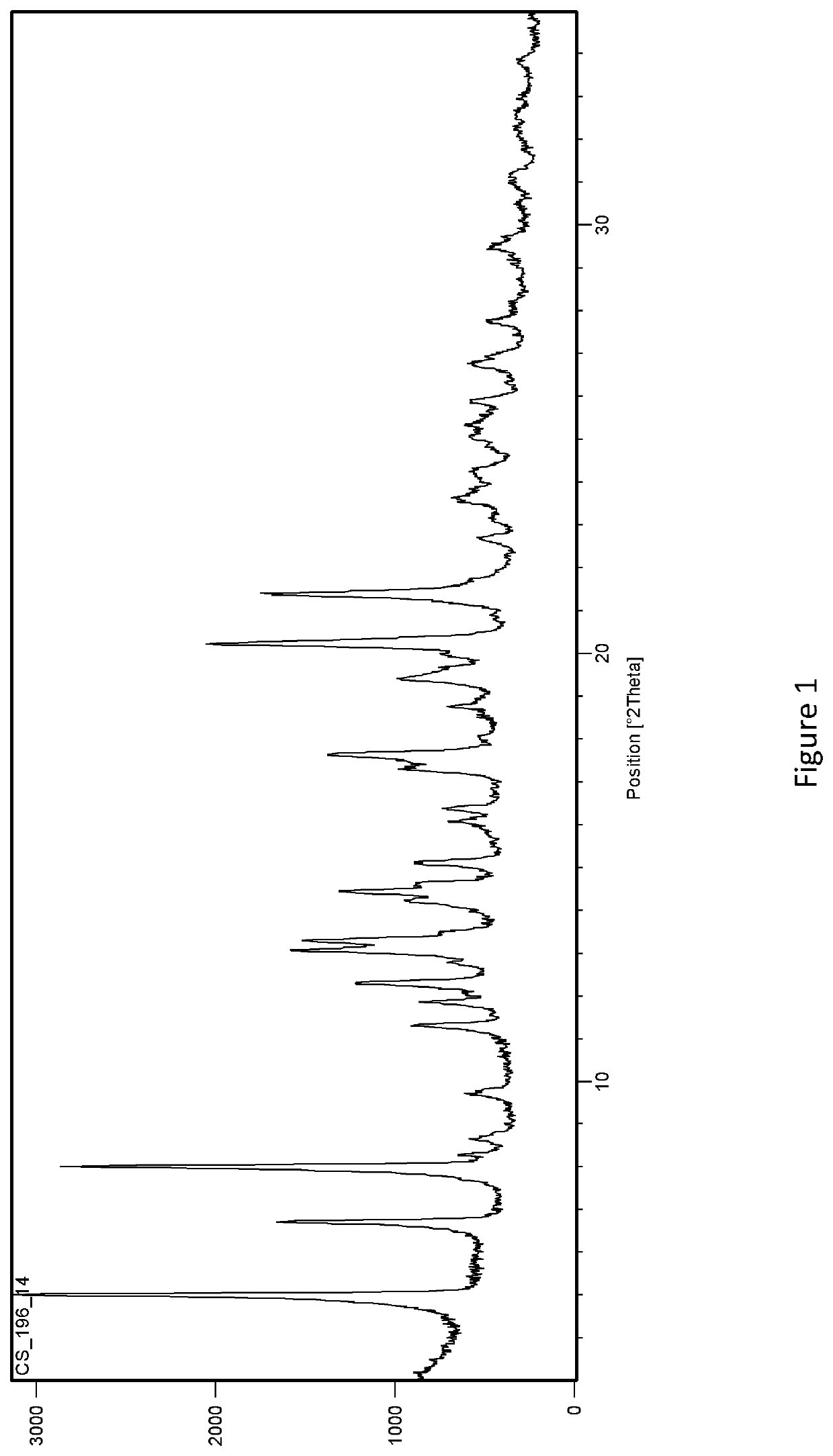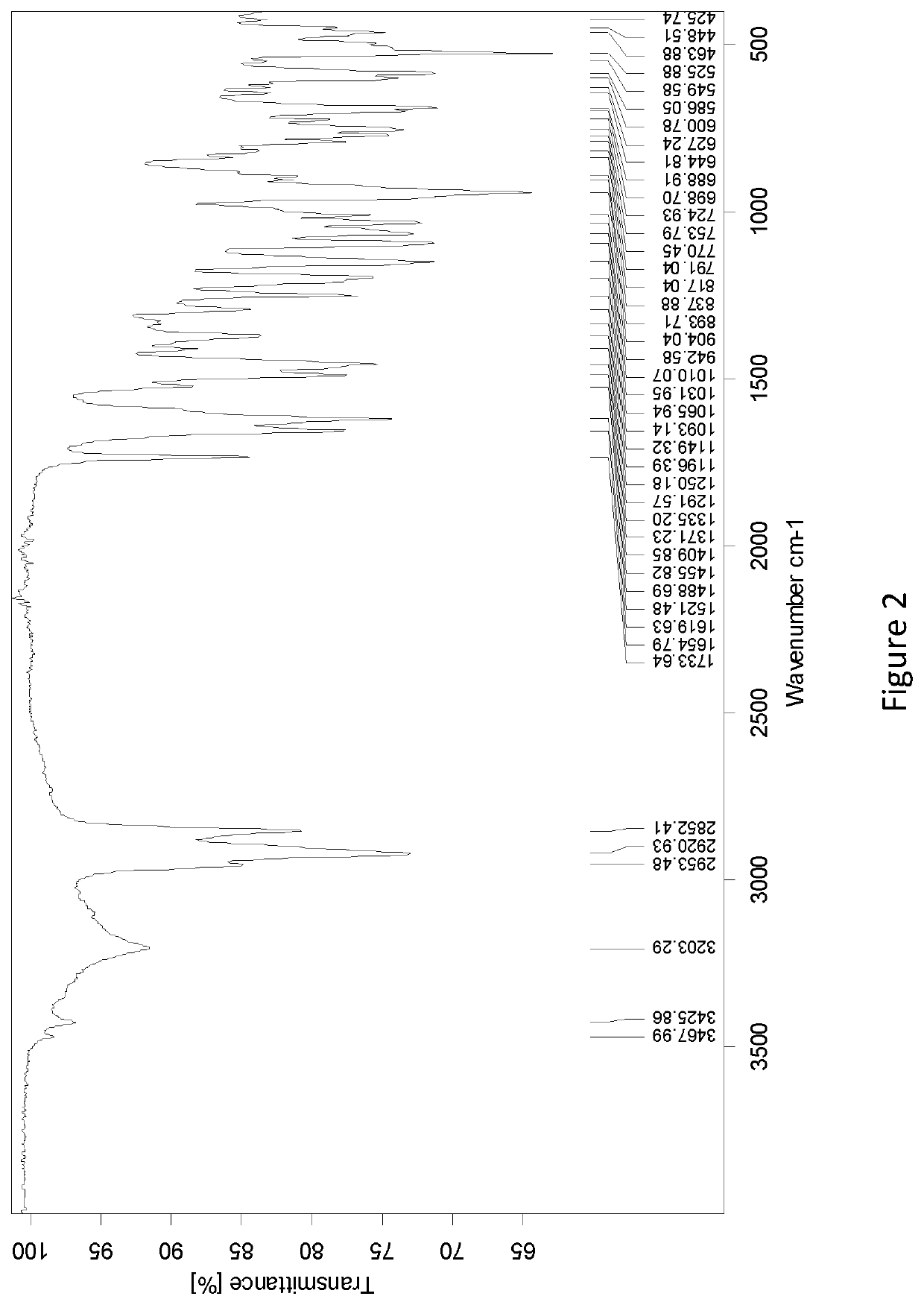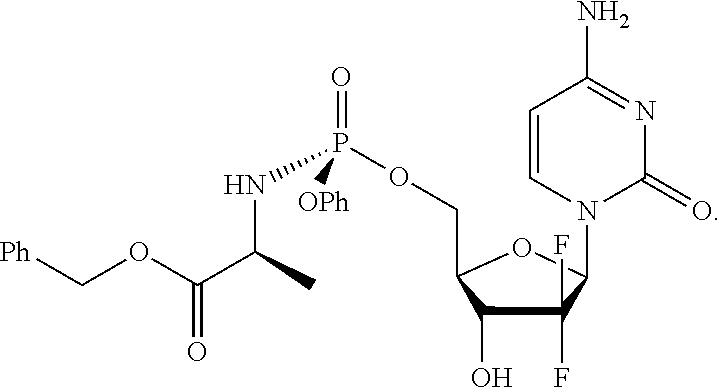Methods of separating gemcitabine-phosphate diastereoisomers
a technology of diastereoisomers and gemcitabine, which is applied in the field of methods of separating gemcitabinephosphate diastereoisomers, can solve the problems of high cost of hplc-based industrial scale separation process, limited clinical utility of gemcitabine, waste of energy and material, etc., and achieves improved diastereoisomeric purity, high yield, and improved purity
- Summary
- Abstract
- Description
- Claims
- Application Information
AI Technical Summary
Benefits of technology
Problems solved by technology
Method used
Image
Examples
example 1
Solvent Screening
[0120]First a solvent screening was conducted with 17 different solvents (see Table 1). Approximately 25 mg of a diastereomeric mixture (33:67 (R):(S)) of NUC-1031 was suspended in the listed solvents (1 mL) and stirred overnight. In case dissolution occurred more solid was added. The suspensions were sedimented and the relative amounts of the two diastereoisomers in solution was determined by HPLC.
[0121]
TABLE 1Percentages in bold indicate high (>85%) diastereoisomericenrichment in the solution.(R)-epimer(S)-epimer(R)-epimer(S)-epimerSolvent[%][%][mg / ml][mg / ml]TBME39.460.60.10.1acetone12.387.72.27.7THF18.681.43.06.6MeOH24.575.522.835.1EtOAc24.975.10.71.1EtOH13.586.54.915.7IPA5.894.21.613.0MEK12.487.60.93.2ACN5.494.61.110.0iPrOAc31.868.20.60.6nPrOH9.190.92.210.8nheptane31.868.20.40.4H2O23.276.80.50.9toluene10.889.20.20.7MIBK25.674.40.71.0nBuOH5.294.81.614.4MeTHF19.980.10.61.2
[0122]Thus a number of solvents (acetone, EtOH, IPA, MEK, ACN, nPrOH, toluene, nBuOH) exhibit...
example 2
Crystallisation Optimisation
[0123]The enrichment provided by acetonitrile and isopropanol were evaluated at a range of concentrations and temperatures (see Table 2). Two types of experiments were conducted: simple slurries (20° C.) in different volumes and slurries / recrystallisations at 80° C. For the experiments 200 mg of the diastereomeric mixture (33:67 (R):(S)) was suspended in the solvents and volume indicated below and optionally heated to reflux and cooled to 20° C. The suspensions were stirred overnight and isolated. The relative proportions of the two epimers present in both the solution and in the solid cake were determined by HPLC.
[0124]
TABLE 2(R)-(S)-(R)-(S)-TempSolventVolumeepimerepimerepimerepimerCake[° C.](solid / solution)[mL][%][%][mg / ml][mg / ml][mg]20° C.ACN solid544.655.412520° C.ACN solution56.993.10.679.0420° C.ACN solid1063.736.38320° C.ACN solution106.293.80.598.8520° C.ACN solid1591.88.25920° C.ACN solution156.193.90.639.7420° C.IPA solid577.622.46820° C.IPA sol...
example 3
Scale-Up
[0126]2×25 g of a diastereomeric mixture of the (R) and (S) epimers (33:67 (R):(S)) were each dissolved in 1875 mL acetonitrile at 25° C. The suspensions were combined during filtration. The first filtration provided a solution A2 and a solid A1. The filter cake was re-slurried and the resultant suspension filtered to obtain a second solution B2 and a second solid cake B1 (see Table 3).
[0127]
TABLE 3(R)-epimer(S)-epimerCake[%][%][g]Solid A173.726.318.43(followingfirst filtration)Solution A25.294.8ca. 31(obtained fromfirst filtration)Solid B191.68.414.9 (following secondfiltration)Solution B26.593.5ca. 4(obtained fromsecond filtration)
PUM
| Property | Measurement | Unit |
|---|---|---|
| temperature | aaaaa | aaaaa |
| temperature | aaaaa | aaaaa |
| temperature | aaaaa | aaaaa |
Abstract
Description
Claims
Application Information
 Login to View More
Login to View More - R&D Engineer
- R&D Manager
- IP Professional
- Industry Leading Data Capabilities
- Powerful AI technology
- Patent DNA Extraction
Browse by: Latest US Patents, China's latest patents, Technical Efficacy Thesaurus, Application Domain, Technology Topic, Popular Technical Reports.
© 2024 PatSnap. All rights reserved.Legal|Privacy policy|Modern Slavery Act Transparency Statement|Sitemap|About US| Contact US: help@patsnap.com










